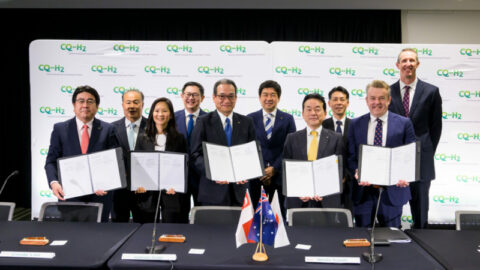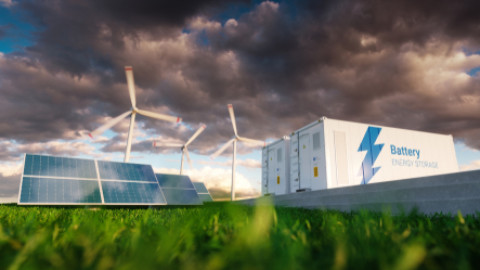The Australian Energy Market Commission (AEMC) has outlined how batteries can support Australia’s low-carbon future, with new incentives for fast reactions to support frequency control needs.
Two key steps have been designed to integrate energy storage systems into the national electricity market, as shown in a draft design plan.
These two key steps are: new measures to allow small batteries to earn extra income and large batteries to have fewer cost and logistics hurdles to participate in the market.
The AEMC has created new markets to financially reward ultra-fast energy providers like batteries for reacting at short notice when the system needs frequency control to avoid blackout.
The AEMC’s draft energy storage plan simplifies arrangements for market players that send energy both ways. It improves how they register to participate in the market and streamlines their obligations.
This plan is the result of a rule change request from the Australian Energy Market Operator (AEMO), and the result of close, ongoing dialogue with AEMO and other stakeholders.
This is the first of the new system services markets designed to deliver essential security services the system needs as the energy sector decarbonises.
This new market provides a new income stream for batteries, aggregators, hybrid businesses and other fast responders like solar, wind or those offering demand management services able to react within a lightning speed of one to two seconds – to stabilise system frequency and keep the lights on.
AEMC Chair, Anna Collyer, said, “The changes we’re announcing recognise that energy is no longer a one-way transaction.
“The energy market is moving to a future that will be increasingly reliant on storage to firm up the expanding volume of renewable energy, as well as address the growing need for critical system security services as the ageing fleet of thermal generators retire.
“Within two decades, installed storage is expected to increase by 800 per cent* − it will be central to energy flowing two ways.”
By creating a universal category called an integrated resource provider, the same rules will apply to anyone who provides storage or combination energy services – whether it be batteries, pumped hydro, companies that aggregate energy from small generation and storage units, or large-scale hybrid facilities that combine different technologies behind the one connection point (like factories with solar PV and a battery).
The change will level the playing field with other market participants – batteries for example, will no longer need to register twice (to both draw energy from the grid and send it out) as they are currently required to do.
For small customers, this will open up opportunities to earn more revenue for their home battery, because they can sign up with innovative new aggregator businesses who will pay them for using their battery at certain times.
At the moment, aggregator businesses can only provide energy one way, but our changes will open up new business models for them.
Ms Collyer said, “This change works in tandem with our existing proposals on distributed energy resources currently under consideration, which are designed to make home batteries a more attractive way to maximise solar investments.
“It’s also central to the commission’s plans to make the rules more forward-looking so that they work for technology that hasn’t been invented yet.
“If we make the rules more elastic to focus on what market service you offer rather than who you are, they will stay relevant in the face of rapid change and support energy innovation.
“And it lays important foundations for the Energy Security Board’s post-2025 market design to become operational.”
The AEMC’s final determination to create a new fast frequency response market is a major step forward on power system security.
There are already frequency control ancillary services markets available, but until now, the fastest service was six seconds.
“As our energy mix continues to change, we will need these new, ultra-fast options. They’re like an insurance policy for keeping the energy system in balance and avoiding blackouts,” Ms Collyer said.
The fast frequency response final decision announced is the result of a rule change request from Infigen Energy and involved consultation with a wide range of stakeholders.
Following feedback from stakeholders, the implementation of these markets has been brought forward to October 2023.
The draft energy storage plan is still open for consultation, with submissions due on 16 September 2021 and a final determination the following month.
*AEMO 2020 ISP NEM Generation Outlook says the growth in installed storage including batteries, is expected to increase from around 2000MW in 2021-22 to 16,000MW by 2041-42.
For more information and contact details, visit the Integrating Energy Storage project page or the Fast Frequency Response project page.
















